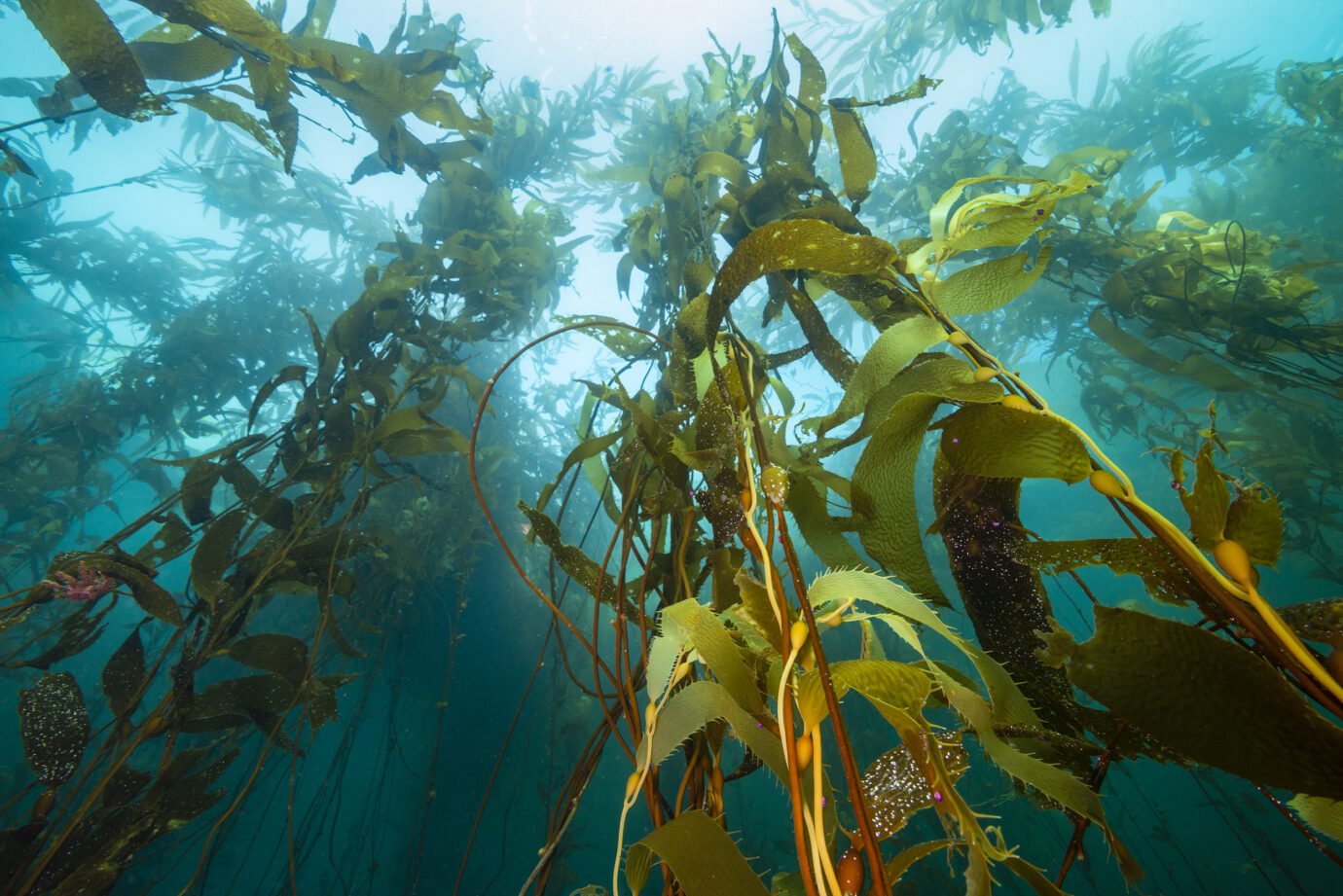
Photo: Eduardo Sorensen for Rewilding Chile
Ingrid Espinoza León, Conservation Director for Rewilding Chile.

Photo: Eduardo Sorensen for Rewilding Chile
Along the coasts of Chile, we find lush kelp forests, commonly known as “huiro.” These were described by Charles Darwin in the chronicles of his travels, noting: “One can only compare these great aquatic forests of the southern hemisphere with the terrestrial ones of the tropical regions (…) If part of a forest were destroyed, not so many animals would die if a forest of huiro or kelp were destroyed”. Today, a study published in Nature Communications has highlighted the importance of giant kelp forests to the global economy, estimating that these ecosystems provide services valued at more than $500 billion annually. This figure stems from the role of kelp forests as a habitat for fish and shellfish species and thus for the fishing industry, as well as their ability to absorb atmospheric carbon dioxide and remove pollutants from seawater, such as nitrogen.
The importance of giant kelp forests cannot be underestimated, and we must take urgent measures to protect them. Conservation measures and sustainable management of them need to be established, including regulating illegal and excessive extraction of some macroalgae forests and promoting responsible and sustainable fishing practices.
The importance of giant kelp forests cannot be underestimated, and we must take urgent measures to protect them. Conservation and sustainable management measures must be established, including regulating illegal and excessive extraction of some kelp forests and promoting responsible and sustainable fishing practices.
According to an analysis by Mora-Soto, macroalgae forests in the Southern Hemisphere are one of the least altered coastal marine ecosystems on Earth. His mapping shows they are found today in almost the exact locations and occupy the same extent as 200 years ago. This suggests that these ecosystems adapt rapidly to environmental change, highlighting the need to protect them to maintain their functions and ecosystem services. In this sense, we value the initiative of the benthic resource committee of the Magallanes region and Subpesca, which, to ensure the sustainable use of hydrobiological resources, proposes and establishes a two-year ban on extracting the huiro floater, Macrocystis pyrifera, prohibiting the exploitation of meadows, promoting its preservation and the protection of associated ecosystems. There is also the concern of making it indefinitely.
The importance of giant kelp forests cannot be underestimated, and we must take urgent measures to protect them. Conservation and sustainable management measures must be established, including regulating illegal and excessive extraction of some kelp forests and promoting responsible and sustainable fishing practices. Solutions should include creating marine protected areas to guarantee the conservation of these critical ecosystems, ensuring their long-term economic and ecological value.